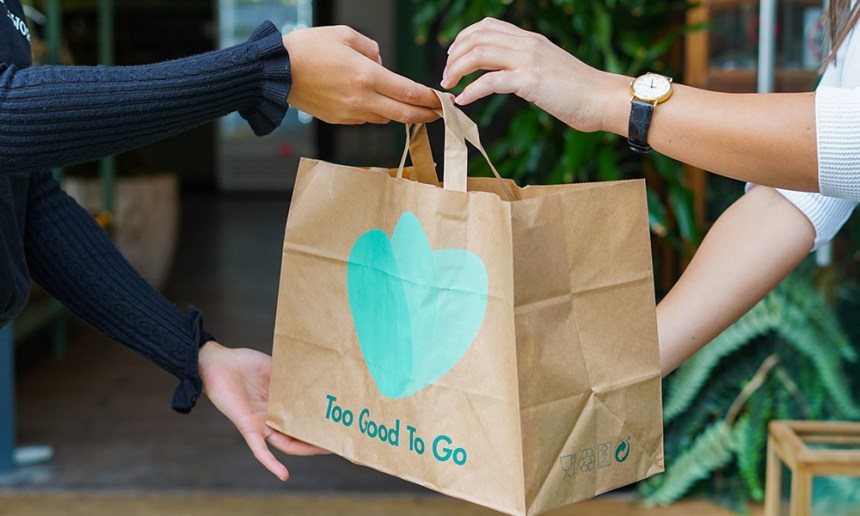Sophie Trueman, Managing Director of UK & Ireland at Too Good To Go, sheds light on the impact food waste has on climate change and discusses how the entire supply chain can reconsider their approach to managing surplus food.
It’s no secret that climate change is a serious issue, and in the fight against it, food waste too frequently gets left out of the conversation.
It may come as a surprise to many that, amid the climate crisis, food waste accounts for 10% of all human-caused greenhouse gas emissions worldwide, according to the Global Environmental Action non-governmental organisation WRAP.
To put it into perspective, if food waste were a country, it would be the third most emitting country in the world, after China and the USA. But why is this?
The answer lies in the various stages of the supply chain, from production to packaging, retail, and ultimately, households.
At every stage of the food system, greenhouse gas emissions are released at alarming rates, with waste occurring at multiple touchpoints.
From production to households, food waste occurs at every level

At the production level, key drivers such as inefficient harvesting times and handling can result in significant food waste and loss.
The food system we’ve grown accustomed to affects both biodiversity and our environmental ecosystem, meaning that when food is discarded prematurely, the resources invested in its production – such as water and energy – are also wasted.
At the manufacturing level, these challenges take on a slightly different form. Demand fluctuations, packaging standards, and overstocking greatly contribute to high amounts of food and product waste.

With an estimated 1.4 million tonnes of food wasted annually at the manufacturing stage, we were inspired to develop solutions like our Too Good to Go Parcels delivery function to minimise food waste further up the supply chain.
Recently introduced in November 2024, Parcels is a sustainable retail channel that alleviates the logistical burden of surplus management and ultimately minimises waste.
Since its launch, we’ve helped well-loved brands like SPAR manage their inventory, which is often affected by packaging changes and excess items nearing their ‘use-by’ date.
Through Parcels, brands simply ship their surplus products to our packing facility in the Midlands, where its logistics partner, CEVA, manages the rest.
Consumers can then purchase a Parcel through the Too Good To Go app – imagine the Surprise Bag we know and love but bigger and delivered straight to your door!
Additionally, retailers encounter similar issues when it comes to managing surplus food effectively. Factors such as improper date labelling and the removal of ‘imperfect’ looking food items have widely contributed to excessive food loss over time.
Although consumers and households sit at the bottom of the supply chain, they play a prominent role in the food waste issue. While a staggering 10.7 million tonnes of food is wasted in the UK alone, 60% of it stems from households.
Fortunately, there are plenty of ways that consumers can address this issue, and they’re not as challenging as one might expect.
One helpful trick that consumers can add to their daily routine is applying the Look, Smell, Taste method to trust their senses when assessing ‘best before’ products.
Additionally, consumers can reduce their carbon footprint by adapting everyday habits such as getting creative with leftovers to create new meals and storing food items properly to extend its shelf life so that they can be used in future dishes.
The role of Too Good To Go

At Too Good To Go, we have seen the power of innovative solutions in combating food waste firsthand.
In the UK alone, our community has saved 55 million Surprise Bags of food, helping to prevent approximately 121.5 million kilograms of CO2e emissions. This demonstrates that small actions can lead to significant change.
This is further reflected in the fact that, in recent years, consumers and businesses alike have become more aware of the issue of food waste and its environmental impact.
In fact, 68% of food decision-makers in the UK noted an increased awareness of food waste over the past five years, according to our Food Waste Gap Report.
The data told us that addressing food waste has become a higher priority for food decision-makers in UK households, which is really encouraging considering the amount of waste that takes place in them. But this applies to businesses, too.
If we look at the grocery sector, consumer awareness and demand were the top drivers referenced for why the industry is prioritising food waste more than ever before.
Tackling food waste is everyone’s responsibility

Nonetheless, the responsibility to reduce food waste does not rest solely on consumers and businesses. Government officials and policymakers must also strive to raise awareness on the issue and support sustainable practices so that reducing food waste becomes the norm rather than the exception.
Every year, 2.5 billion tonnes of food is wasted at the global level – this is as much as 40% of all food produced.
According to Project Drawdown, reducing food waste is the number one action we can take to help tackle climate change. As such, we all have a part to play in preventing food waste.
As we continue to grapple with the realities of climate change, collaboration is key. As we continue to work together with businesses, consumers, and the government we continue to see increasing impact in large-scale food waste reduction, ensuring that it does not go overlooked.
When managing our food, let’s continue to adopt sustainable habits down the entire chain so that we can not only prevent unnecessary waste but also support community well-being to bring joy to others.
The post Food waste: What is its impact on climate change? appeared first on Circular Online.

